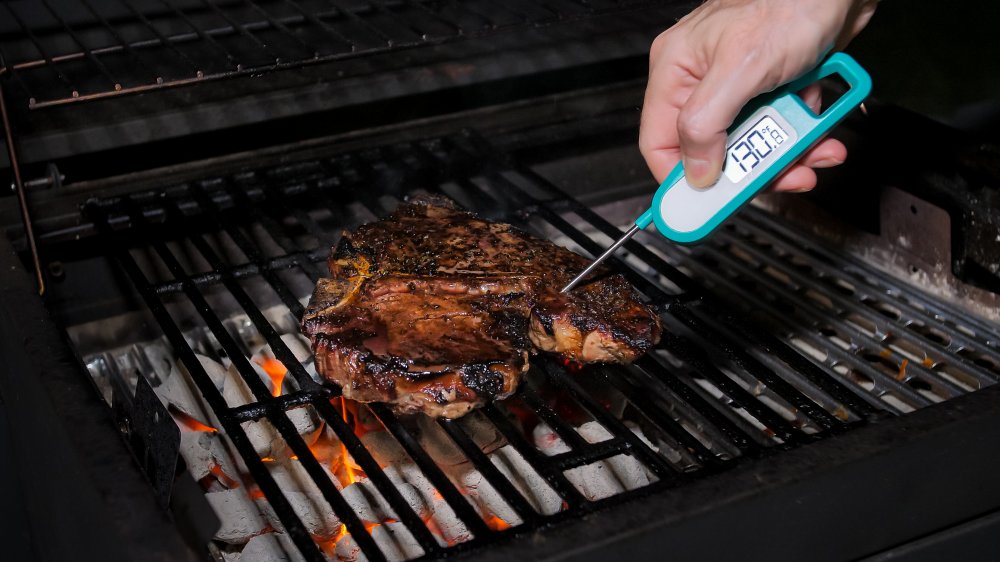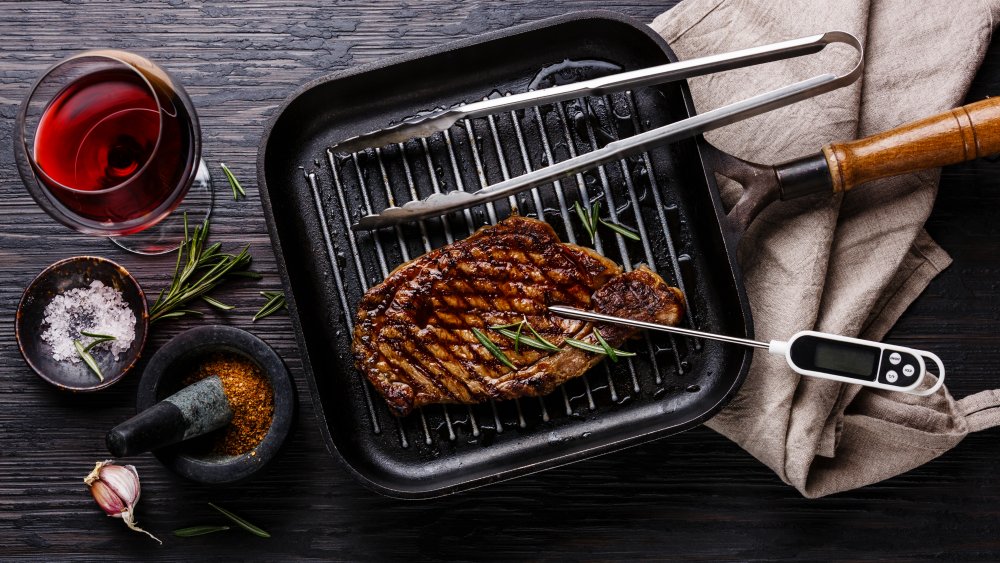The Reason You Should Be Using A Meat Thermometer
You might think meat thermometers are just for large roasts and your Thanksgiving turkey, but if you have a good instant-read digital thermometer in one of your kitchen drawers, you'll be surprised how often you ought to reach for it. Rather than slashing into your chicken breast to see if there's any pink left in the middle, or leaving your pork chop cooking in the pan for an extra minute or two just to be sure it's done, a meat thermometer can help you cook your proteins to perfection without drying them out and leaving you with a less-than-appetizing meal.
According to Eat This, Not That!, slicing into your meat to check whether it's done can actually end up affecting the flavor by letting the juices leak out. It's much better to use your meat thermometer instead. To correctly use a meat thermometer, insert it into the thickest part of the food; usually, you'll only need to hold it there for a few seconds before you'll get a reading on the temperature (via Taste of Home).
How long should you be cooking your meat?
A meat thermometer can help prevent both overcooking and undercooking. Aside from the differences in flavor and texture you'll get from perfectly cooked meat, checking the temperature before serving is an important part of food safety (via Eat This, Not That!). The U.S. government's Foodsafety page has a detailed chart listing a variety of meats and seafoods and the minimum safe cooking temperature for each. The Centers for Disease Control and Prevention (CDC) also has guidelines for cooking meat.
The CDC recommends cooking fish and cuts of beef, pork, veal, and lamb to 145 degrees F, cooking ground meats to at least 160 degrees F, and cooking all poultry (plus reheated leftovers and casseroles) to a minimum of 165 degrees F. Regardless of its appearance, according to the CDC, once your meat reaches the recommended minimum temperature, it's safe to eat.
Finally, despite its name, you can use a meat thermometer for more than just cooking meat. According to Taste of Home, this handy tool can also help check the temperature of your oil whenever you're doing some frying, and Eat This, Not That! recommends using one to double-check the temperature of stuffing and egg dishes, including frittatas. In addition to making sure all of your food is safe to eat, a quick check with a meat thermometer will help you avoid overcooking so everything you make is juicy and delicious.

